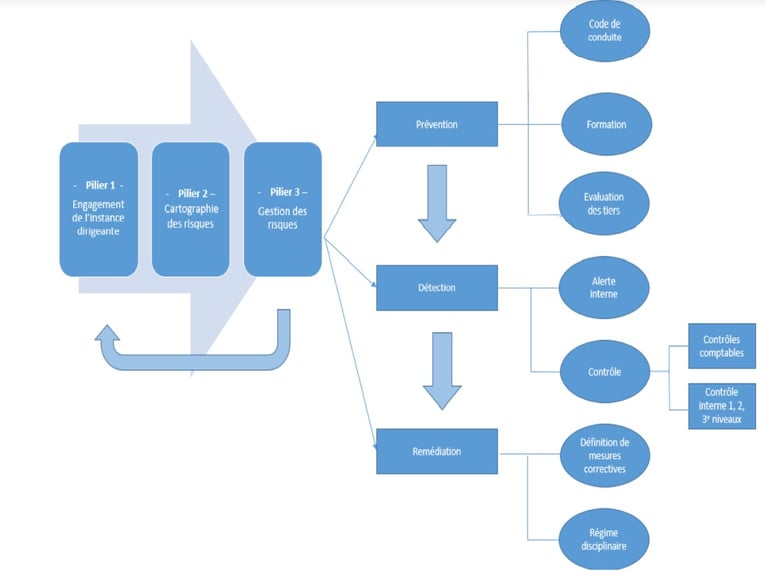New French Anti-Corruption (AFA) Guidelines – What You Need to Know 30 Sec - 3 min - 3 Sec
The French Anti-Corruption Agency (Agence Française Anticorruption “AFA”) released updated guidance for complying with France’s landmark anti-corruption framework Sapin II. New recommendations are designed to help public and private legal entities strengthen practices that prevent and detect acts of corruption.
30-second Take
- Top management accountable for effectiveness of anti-corruption programs
- Employee training critical to raise awareness about fighting corruption
- More specific employee training needed for levels of risk exposure within enterprise
- More proactive and rigorous risk management deemed cornerstone of effective efforts
- Guidelines not mandatory but provide helpful recommendations for business with global operations to comply with the Sapin II Anti-Corruption Act
- Third update inside 5 years aligns with other best practice guidance for ethics and compliance to evolve from check-box rules to values-based programs
3-Minute Deeper Dive
France adopted its comprehensive anti-corruption framework, Sapin II, in December 2016. It is modeled on the U.S. Foreign Corrupt Practices Act (FCPA) and the UK Bribery Act, and is considered a groundbreaking legislation. It was heralded at the time by the French government “as an essential step in strengthening the values which form the basis of our democratic, economic and social pact.”
Sapin II made it mandatory for companies operating in France with more than 500 employees and minimum annual revenues of €100 million to implement anti-corruption compliance programs and would impose penalties for companies that fail to comply. It birthed the French Anti-Corruption Agency (Agence Française Anticorruption “AFA”) as the administrative agency responsible for oversight. Since its founding the AFA has conducted hundreds of audits of companies’ anti-corruption efforts. Among the resolutions included in the unprecedented 2020 settlement with Airbus - the largest global foreign bribery resolution in history – was that AFA serve as the corporate monitor of the company.
The January 2021 guidance is based on three inseparable pillars:
- The first pillar is the commitment of senior management to corruption-free performance of the organization’s tasks, competence or business.
- The second pillar is using risk mapping to raise awareness of the entity’s exposure to corruption risks.
The third pillar is management of the identified risks by means of effective measures and procedures to prevent and detect any behaviors or situations that violate the code of conduct or that could constitute corruption, and to impose the relevant sanctions.

Framework diagram included in latest AFA guidelines
The January publication spans 82 pages. Other guidance covers awareness training, development and deployment of codes of conduct, corruption risk-mapping, whistle-blowing systems, third party due diligence, program management and the availability of an anti-corruption compliance team, including the use of external consultants or service providers.
More information on these guidelines may be found here: French AC Agency Guidelines .pdf (agence-francaise-anticorruption.gouv.fr)
This guidance reflects LRN’s long-held belief that programs alone don’t create compliance. Instead ethical corporate cultures – with aligned and inspired leadership teams and workforces, engaging education efforts built around company values and high ethical standards, robust and proactive management of risk, and good governance – are the foundation of a company’s ability to abide by local and international laws and meet rising expectations for elevated workplace behavior and corporate citizenship. It also aligns with LRN guidance that any effective risk management effort must include ethical culture and behavioral risk assessments.
Further, a healthy culture, committed leadership, and people inspired by a deeper set of human values allow ethics and compliance tool sets to function effectively. It is all the more urgent when it comes to combating corruption, particularly in times of crisis, when individuals, leadership, business units, or the entire company may feel pressure to trade principles for performance.
3-second Links:
Measuring compliance program effectiveness: Five measurable factorsMeasure and shape your ethical culture and E&C program resonance: LRN Ethical Culture Program Assessment
Request an LRN advisory consultation: Connect with an advisory expert



